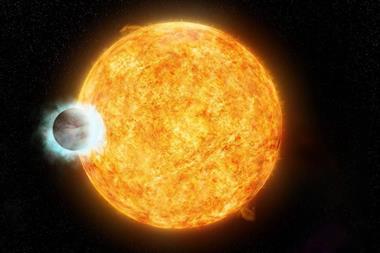Radio telescope detects propylene oxide in a star-forming region of outer space
Astronomers have found a chiral molecule in space for the first time. Although such left-handed or right-handed molecules have been detected on meteorites, the result offers a new line of enquiry into the origins of life on Earth.

Some organic molecules can exist in two seemingly identical forms that are mirror images of each other, but have different chemical properties – enantiomers. But biological molecules, such as sugars or amino acids, only exist in one chiral form on Earth. Many chemists are struggling to explain this disparity, with many believing the origins of homochirality can be found in space.
In an attempt to retrace life’s steps, Brett McGuire and colleagues at the California Institute of Technology and Harvard University, US, pointed the Parkes radio telescope, Australia, towards the centre of our solar system. The team found the chiral molecule propylene oxide in Sagittarius B2, a giant molecular cloud and star-forming region.
Although the measurement in of itself doesn’t explain homochirality, the team argue the sensitivity of such telescopes could pick up whether an enantiometric excess exists in space.
References
B McGuire et al, Science, 2016, 352, 1449 (DOI: 10.1126/science.aae0328)












No comments yet